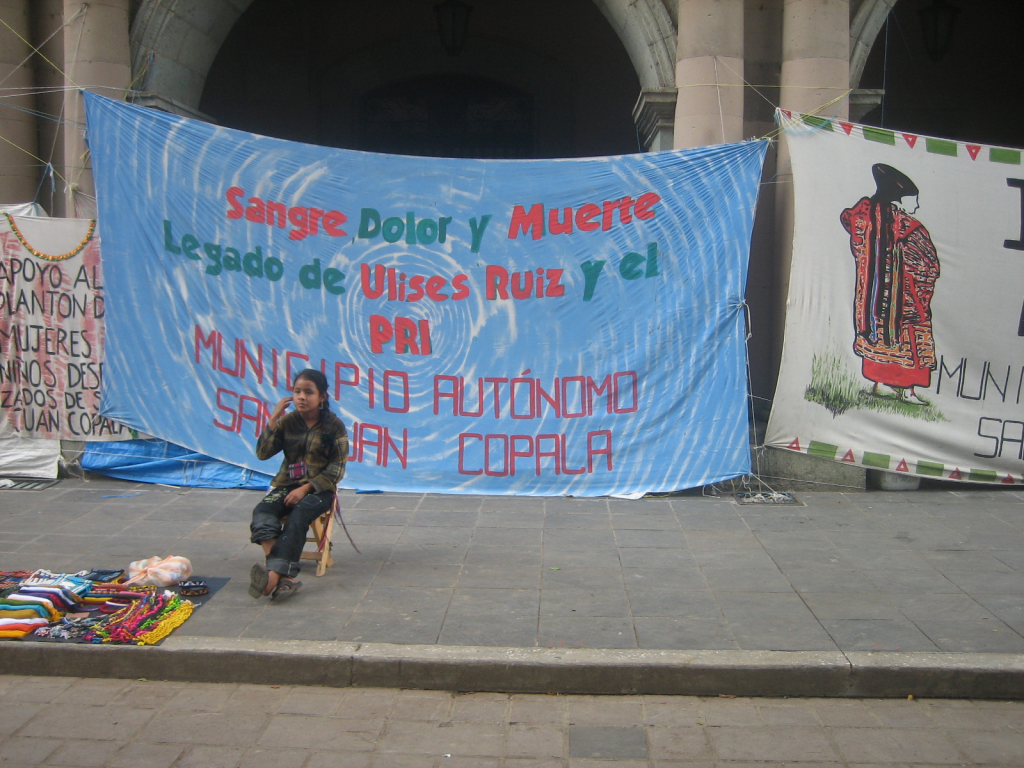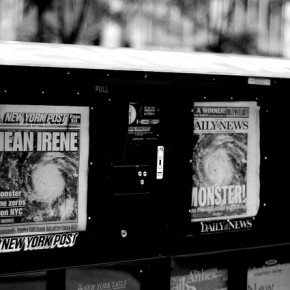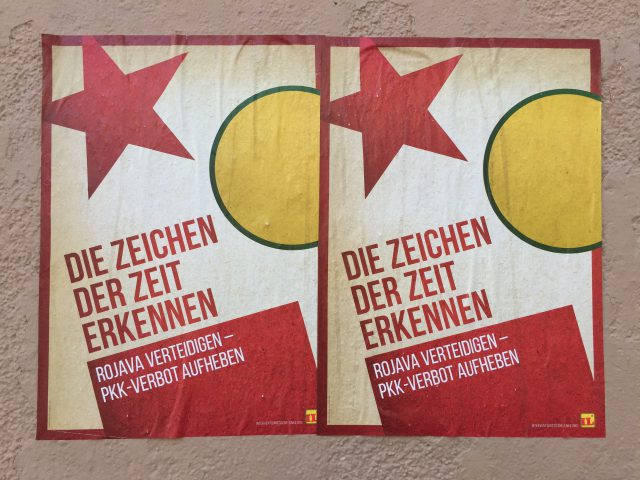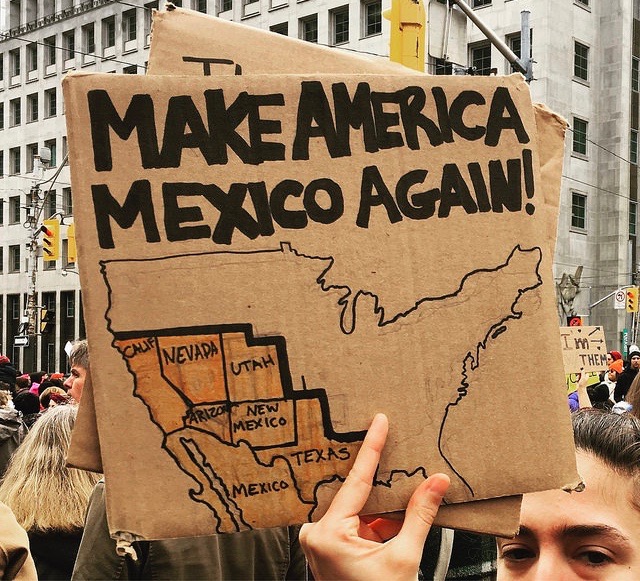I came to Oaxaca on a whim. A friend announced that she was taking a trip south (I live in northern California,) so I decided to tag along. I hadn’t been to the country since I was a kid, when my family took a cruise to Acapulco.
My knowledge of Mexico was spotty. Besides a smattering of Zapatista lore and typically tabloid news fare (maquiladoras, illegal migrants, narco-violence, etc,) my ideas about the country came from a book by Oliver Sacks, about Oaxaca’s biodiversity. He has a thing for ferns.
Oaxaca was also the site of phenomenal protests a few years ago. I heard about the unrest when an Indymedia reporter from New York City was fatally shot while covering it. The details eluded me — a teachers union, a corrupt governor, tear gas. I began to read a book on Mexican history. It was called Fire and Blood.
When I get to Oaxaca City, I land at the house of Antonio, Alex and Monique. Antonio, the friend of a friend of a friend, had a spare mattress in his living room. Antonio and Alex come from Barcelona. They chat together in Catalan but my Spanish is so bad, I can’t tell the difference.
Monique is a graduate student in anthropology. I’m told she’s doing fieldwork, but no one knows on what. She wakes up around noon and spends the afternoon drinking black coffee while typing at her computer, smoking cigarettes. Antonio comes down early in the morning and makes coffee in a cheap metal percolator. He chops up a clove of garlic that he pops in his mouth and slugs down with a glass of water. A true Mediterranean.
Alex is a graphic designer working for clients back in Spain. He has two enormous tattoos, one on each inner forearm, of skeletons in the style of the Day of the Dead. One plays a tiny guitar and sports of jaunty sombrero; the other wears a dainty dress and lady-like hat and appears to be doing a jig.
Between the three of my hosts, I receive several in-depth, pencil-drawn maps of the area with copious scribbled notes of street names, which change every three blocks, neighborhoods, the best coffee in town, and the best place for the anti-gripe juice that I see everyone drinking to keep away the flu during the rainy season. The beverage is sold in a plastic bag tied with a rubber band, a straw sticking out of the top.
Preoccupied by bleeding mosquito bites, I wander the town half-awake. It’s a two-story municipality in earth tones, dust and dirt, its center filled with old mission-style buildings, with arced roof tiles the color of adobe. Elaborate carved stone framed windows, all aged and decrepit. Perhaps its the chapter I’m reading on the early Spanish Empire but the city’s buildings give it the atmosphere of a long-abandoned empire where affluence and excess had once been commonplace, now only apparent in fragmentary remains. Everywhere you go are gargantuan wooden doors that look as if they once hid medieval treasures. They are now entrances to banal commercial operations — offices, a warehouse, a bank.
Through activist friends back home, I got the email address of Andrea, a woman at a group called the CASA Collective that places visiting volunteers with local social organizations. I write her after I arrive and hope for the best. I haven’t been a tourist in years, and I’m not sure what to do with myself. I could wander around and take pictures, buy scarves, and eat local delicacies, which I do. But I feel like I should be doing more. When I hear back, Andrea tells me that she doesn’t have work for me right now.
Antonio works at a carpenters collective in a neighborhood far from of the center of town. I offer to help but he senses, rightly, that I probably don’t want to wake up at seven in the morning to drive out there. The language is also an issue. His English is good but not fluent and it’s clearly tiresome for him to speak in this foreign language for too long. My Spanish is minimal. I haven’t learned past tense yet. While most of the time this makes me sound dumb, it can also make it impossible to communicate.
Antonio tells me that work at the collective has slowed down since half of his compañeros went back to their villages to help with the summer maize harvest. “Mexico time,” he says with a somewhat resigned, somewhat appreciative smile. Everywhere I’ve ever been outside of North America, Europe and Japan has their “time.” “Latin time,” “Turkish time,” “Arab time,” even “Jewish time.” This other “time” always means somewhere between twenty minutes to three months after the appointed hour.
If we’re all allotted a certain amount of time in life — that we can never know exactly but which we can be certain is finite — then time is our most valuable natural resource, one to buy from and sell to others. Not so in the realm of this “other” time. In other words, life is not just another resource exchanged for money, goods and services. Time is not measured. It doesn’t tick away; rather, it melts like in a dream or flows like in a story. It doesn’t start out empty, ready to be filled with an activity. Rather, it seems, time is another word for life, which is naturally full of all the things we call life — family, love, labor, parties, music, food.
Anyway, I’m only in the country for a month. I decide to focus on Spanish. I’ll kill as many mosquitos as possible and wander around the city.
Photograph by Joanna Steinhardt






Hey there, my name is Allendria and I used to work for the Oaxaca Times as the editor there. I just came across your blog post. If you’re interested in writing in English about the city and taking free Spanish lessons in return, you should check it out. It’s a great opportunity!